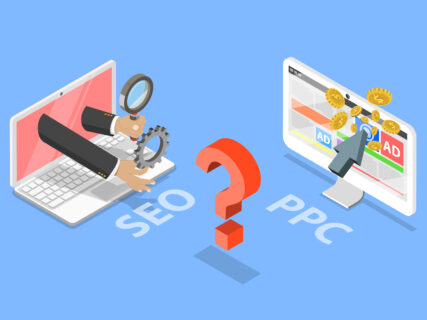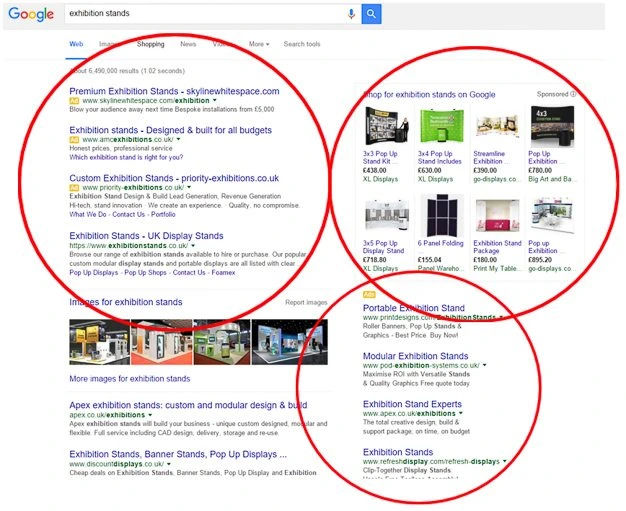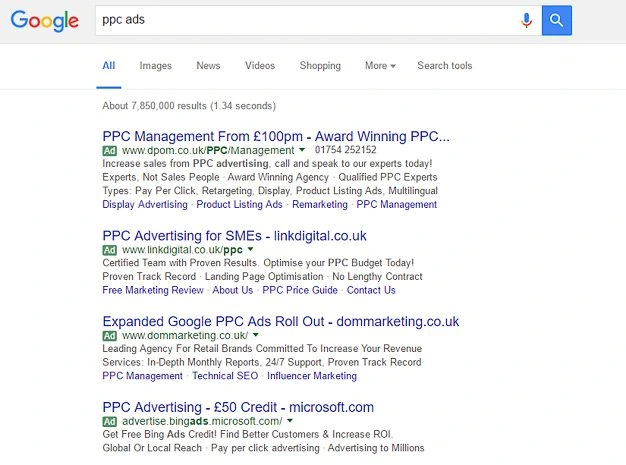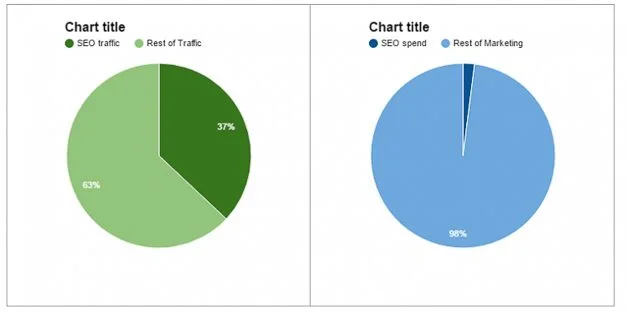
10 mins
OpenSEO vs PPC: The pros, cons, and how they can complement each other in a search campaign
3 mins
As we head towards 2017 and with radically different and changing search results, is PPC simply burning a hole in your marketing budget, which could be better left with SEO and content marketing?
13th October 2016

The monetisation of search results isn’t a surprising one.
I’ve previously looked at whether you should use PPC to help launch your first, new site, the TL;DR being PPC helps get your site started and is a reliable way of gaining traffic regardless of your business size. But as we head towards 2017 and with radically different and changing search results, is PPC simply burning a hole in your marketing budget, which could be better left with SEO and content marketing?
According to some sources, the average PPC costs increased around 50% between 2014 and 2015. In our experience, there have certainly been more increases for the higher volume searches, seeing budgets for PPC campaigns having to match the increases in order to keep the number of clicks.
The monetisation of search results isn’t a surprising one. In fact, Google has been moving over to this model for some time, showing us hints in beta tests that have recently rolled out globally. For example the move to four ads instead of three ads and a sidebar.
Here we have the ads before and after:
 Previous SERPs
Previous SERPs
 PPC 4 ads update
PPC 4 ads update
This meant that PPC advertisers needed to work that much harder (read: pay that much more) to be visible above the fold for desktop users.
This meant that PPC advertisers needed to work that much harder (read: pay that much more) to be visible above the fold for desktop users.
Shortly after this change, Google also changed these ads from yellow, which made them stand out against the green URLs, to green. This made the distinction between paid and organic ads less clear for users. Don’t believe me? The OfCom report on media user and attitudes only 60% of adults could tell the paid ads in search results, and that was before the change of colour and numeracy.
While data is still being collected from these most recent changes, it’s not unrealistic to hypothesise that an increase in the lack of clarity on what is paid ad could lead to an increase in the number of users clicking on ads without knowing. If this does happen then those prime spaces at the top of search results further increase in value, and so also cost.
The way that PPC is set up, it is easy to see how much is being spent and for how many clicks. Budgets can be kept to fairly strictly, giving you a lot of control of how you spend. However, as the increase in popularity of PPC, especially if you’re in an emerging industry, further boosts the cost of each click, budgets will be spent faster and for less overall clicks.
So, at what point does this make PPC less or no longer feasible for your business? Well, consider that as soon as you stop spending on PPC, the clicks stop. When your budget runs out, whether it’s two days or twenty days into your month long campaign, you immediately stop seeing new clicks because you ad is no longer visible in search to be clicked. With SEO, you’re always visible – but what changes is how visible or how close to the top of page one.
SEO is a long term investment because it takes time and prolonged work to achieve. Unlike PPC, you can’t turn it off and on and get instant results. Once you reach page one with your SEO campaign, you’ll continue to see a return for your efforts, day on day, month after month.
SEO is a long term investment because it takes time and prolonged work to achieve.
Simon Bennison in his talk for #BrightonSEO (September 2016) pointed out how unbalanced SEO and PPC spends were, based on the traffic they brought in. In his specific example, while SEO accounted for 37% of traffic, the SEO campaigns behind these sites only had 2% of marketing spend invested into them. In comparison, 4% of marketing budgets were spent on PPC which accounted for only 2% of all traffic.
 Example Ttraffic SEO spend chart
Example Ttraffic SEO spend chart
If nothing else, this shows how unbalanced the marketing spends are in the advancing world of traditional and digital marketing. What it also shows is the tremendous potential that SEO, including content marketing, can have on a site’s traffic, and at a much more cost effective level.
Bennison also made reference to how 63% of marketing budgets are still spent offline. Arguably, a good proportion of this could be taken over by content marketing and SEO for a much better return.
Of course, this is all idealistic thinking in many ways. Convincing a business to invest in SEO is a test for many, meaning that confidence in those who are carrying it out is of utmost importance. If you trust your SEO agency or marketing personnel and are willing to play the long game, the results could be brilliant and without the huge overall spend of PPC.